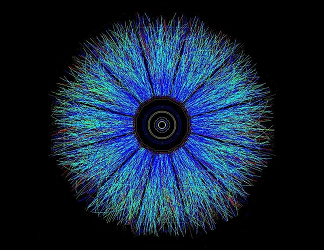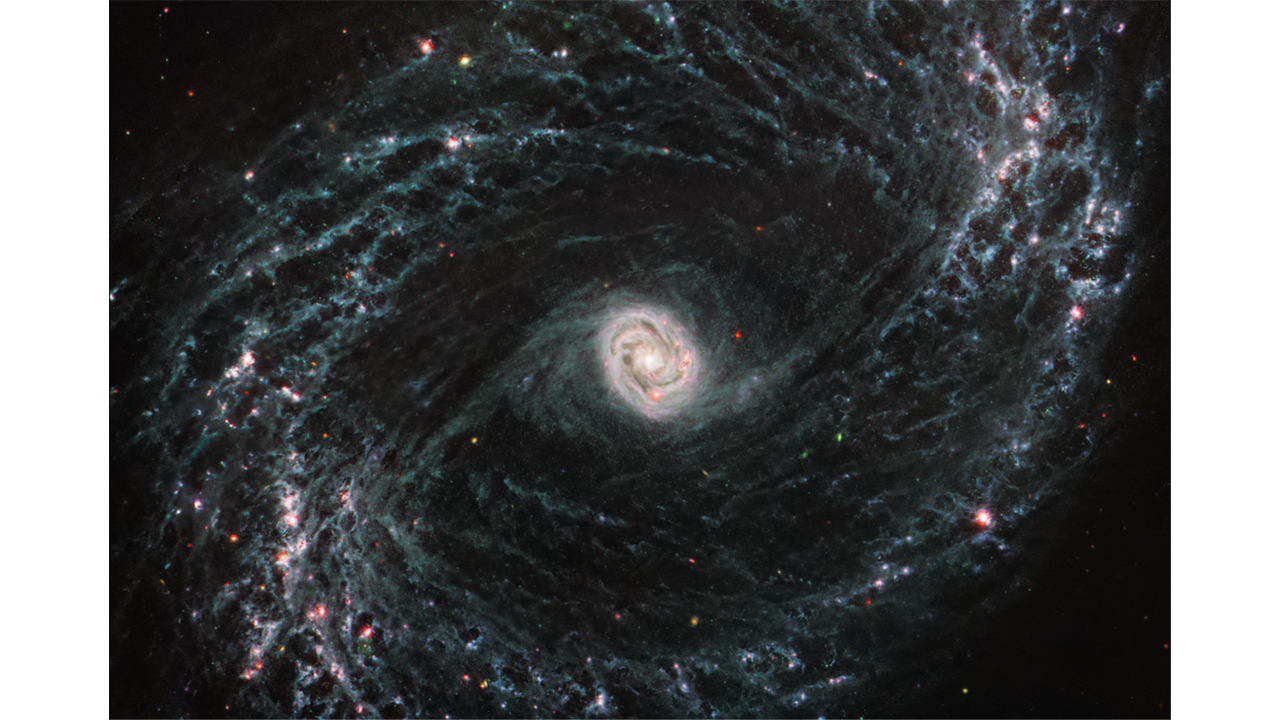

Causality
A seemingly simple concept that we take for granted
Sections

Researchers using NASA’s James Webb Space Telescope are getting their first look at star formation, gas, and dust in nearby galaxies with unprecedented resolution at infrared wavelengths. The data has enabled an initial collection of 21 research papers which provide new insight into how some of the smallest-scale processes in our universe – the beginnings of star formation – impact the evolution of the largest objects in our cosmos: galaxies.
The largest survey of nearby galaxies in Webb’s first year of science operations is being carried out by the Physics at High Angular resolution in Nearby Galaxies (PHANGS) collaboration, involving more than 100 researchers from around the globe. The Webb observations are led by Janice Lee, Gemini Observatory chief scientist at the National Science Foundation’s NOIRLab and affiliate astronomer at the University of Arizona in Tucson.
What is Beyond the Edge?
How reason brought us to where we are today with science. Pythagoras to infinity. An infinite number of sizes of infinity. Do we need to deal with infinity to grasp the past, present and future? How can you build a universe without having something beyond? Explores curved universe. Does the Universe actually go on forever? Is the universe finite in size, finite in time or infinite in size, finite in time or finite in size, infinite in time or infinite in size, infinite in time?
There were signals observed from SETI, were from extra-terrestrial civilizations attempting to communicate or was this WOW some kind of natural phenomena? It’s a big universe.
Have We Really Found The Theory Of Everything?
Are we there yet? This video looks at where we are for the theory of everything and looks at it from all angles. It takes you from the general theory through quantum chromodynamics and then includes an explanation of how string theory goes through its failings and tied into M theory, that may be the answer, but there’s more to it than that. They speak to quantum gravity also explained with string theory.
Albert Einstein's theory of general relativity has passed the most rigorous test to date. One of the core principles of general relativity is the weak equivalence principle. It says that the inertial and the gravitational mass are proportional. Testing the weak equivalence principle is important because Einstein's entire theory is built on it. Thanks to the MICROSCOPE experiment, we now have the most precise results concerning the equivalence principle.
What is the inertial and gravitational mass? Remember the two formula, one is Newtons basic force is equal to mass times acceleration...
F=m x a
..and the other is Newton’s gravitational formula where the force of gravity is equal to the product of the gravitational constant and the two masses...
Fg=G x Mx m/r2
...such as the planet and an attracted body, divided by the square of distance separating them, well way back when Einstein was getting started he said that there is no difference between the force of gravity acting on a body and the force caused by acceleration, as in an astronaut in a space ship gunning his engines. The force caused by acceleration would be the force the astronaut feels holding him down, the inertial force and the force of gravity when he is standing on the earth, that’s the gravitational mass.
Evidence is building that the first galaxies formed earlier than expected, astronomers announced at the 241st meeting of the American Astronomical Society in Seattle, Washington.
As the James Webb Space Telescope views swaths of sky spotted with distant galaxies, multiple teams have found that the earliest stellar metropolises are more mature and more numerous than expected. The results may end up changing what we know about how the first galaxies formed.
JWST is finding too many young but mature galaxies compared to current cosmological theory.
The first colorized, full-resolution photographs obtained by the James Webb Space Telescope have finally been released, and the detail and sharpness of the images are remarkable, especially when compared to Hubble views of the same cosmic objects.
Hubble is no slouch, and its observations have contributed significantly to humanity's understanding of the cosmos over the previous few decades. However, the James Webb Space Telescope is the most powerful observatory ever sent into space, and the image capacity differential is significant.
Did you know that particle accelerators are also used to treat cancer?
That medical imaging has taken great leaps forwards thanks to the crystals and chips developed for particle physics And that CERN is home to a facility that develops isotopes for #medical research? Ever since X-rays were discovered by Wilhelm Röntgen in 1895, physics and medicine have been closely intertwined. Medical imaging and cancer treatments have benefited from developments in particle #physics over the years, and the innovations continue today, including in collaboration with CERN. As part of CERN’s 70th anniversary celebrations, doctors, biologists and physicists will walk you through how the collaboration between fundamental physics and medicine is leading to innovative #treatment methods and diagnostic techniques. One special patient – a researcher, writer and populariser of science – will share with us his experience of being treated for cancer in one of the four European centres for hadron therapy.
As CERN celebrated ten years since the Higgs boson was discovered, experiments produced a wealth of physics results: from the discovery of new exotic particles to surprising antimatter behaviour and much more.
CERN strengthened international collaborations, bringing together experts to discuss quantum technologies and future technology for health, in a year when Brazil signed an agreement to become an Associate Member State. Additional knowledge-sharing initiatives included a world first in cancer radiotherapy, future clean aviation and even the first CERN-driven satellite being launched into space.